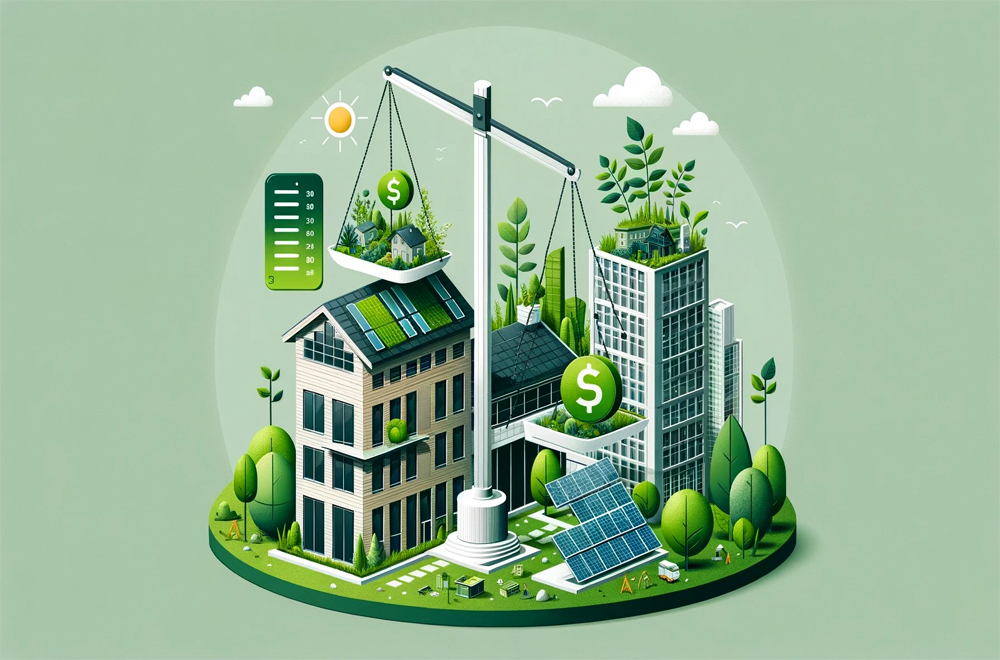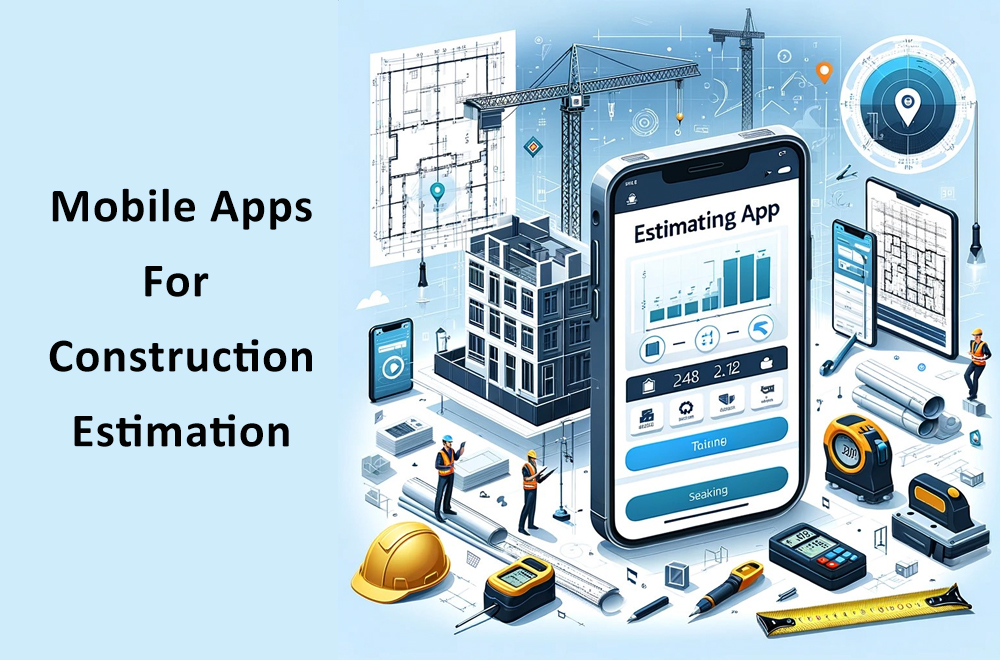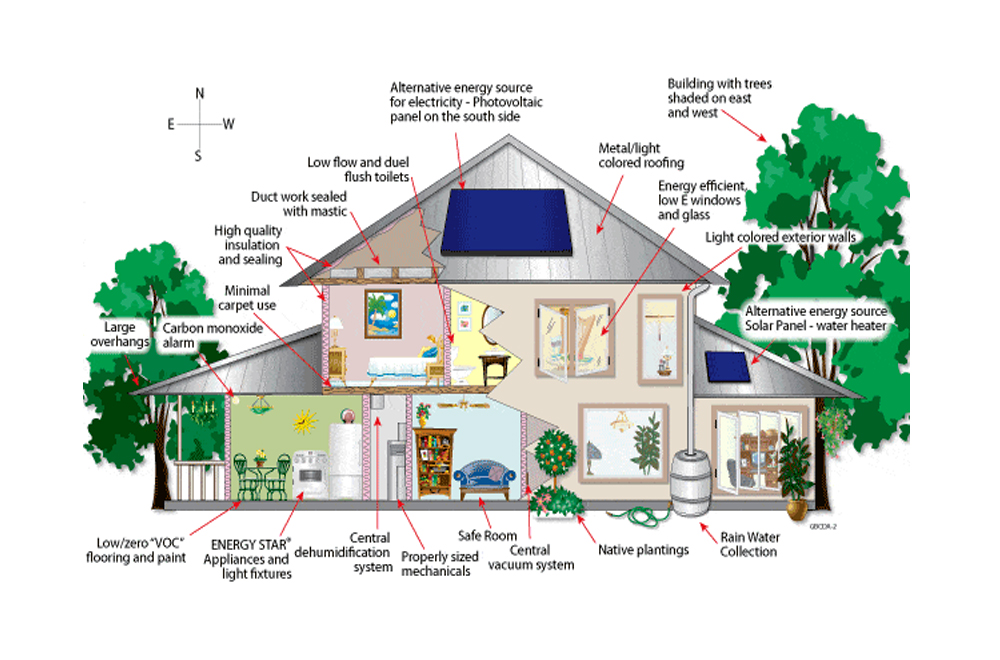Exploring sustainable construction costs reveals the financial nuances of adopting green practices in the building industry. Sustainable building, often called green building, is the practice of creating structures and using environmentally responsible and resource-efficient processes throughout a building’s life cycle. This approach spans from siting to design, construction, operation, maintenance, renovation, and eventual demolition. The core idea is to reduce the environmental impact of buildings by enhancing their efficiency and moderation in the use of materials, energy, and development space.
Sustainable construction involves using eco-friendly construction materials, energy-efficient designs, and technologies that minimize carbon footprint and promote the health and well-being of occupants.
Table of Contents
ToggleCost Implications of Green Practices
While the environmental benefits of sustainable building are widely recognized, the economic implications—especially the cost impacts of green practices—merit closer examination. Understanding these cost implications is crucial for several reasons.
First, it helps debunk the common myth that green buildings are significantly more expensive to construct than traditional buildings. By analyzing the initial investment in sustainable construction against the backdrop of long-term savings and benefits, stakeholders can make informed decisions about the viability and profitability of their projects.
Additionally, recognizing the financial support available through government incentives and the potential for an attractive return on investment (ROI) can further encourage the adoption of sustainable practices in construction.
The Cost of Green Building
Green building costs involve a multifaceted analysis that goes beyond simple construction expenses to include energy savings, water conservation, and long-term operational cost reduction. By understanding these dynamics, developers, builders, and investors can better navigate the economic landscape of sustainable construction, balancing costs with environmental responsibility and long-term financial gain.
This introduction sets the stage for a deeper dive into how green practices affect construction costs, highlighting the importance of sustainable development in today’s construction industry.
Initial Costs vs. Traditional Construction
The perception that sustainable construction is prohibitively expensive compared to traditional construction is a common misconception. Initially, green buildings may incur higher upfront costs—typically attributed to the premium on eco-friendly construction materials, specialized labor, and innovative technologies designed to reduce the building’s environmental impact. However, these costs are increasingly competitive as the demand for sustainable materials grows and economies of scale come into play.
For example, implementing energy-efficient systems and integrating renewable energy sources require a higher initial investment. Yet, when these costs are assessed alongside the lifespan of the building, they often result in significant savings that can offset the initial outlay. A deeper understanding of these costs and how they compare to traditional construction expenses is essential for stakeholders to evaluate the financial feasibility of green building projects accurately. Read on strategies for reducing construction costs, including sustainable options.
Examples of Green Building Materials and Their Costs
Eco-friendly construction materials are central to sustainable building practices. These materials, including bamboo flooring, recycled steel, low-VOC (volatile organic compounds) paints, and energy-efficient windows, are designed to minimize environmental impact. While some of these materials may come with a higher price tag upfront, they often lead to cost savings in the long run due to their durability and efficiency. For instance:
- Bamboo Flooring: Bamboo is a highly renewable resource that can regenerate in as little as three to five years. It is a more sustainable choice than hardwoods, which take decades to mature. The cost of bamboo flooring is competitive with traditional hardwood and offers durability and aesthetic appeal.
- Recycled Steel: Utilizing recycled steel reduces the demand for newly mined materials and decreases construction waste. It’s a strong, durable option for structural support, often costing less than or equal to traditional steel because of the reduced environmental extraction costs.
- Low-VOC Paints: While slightly more expensive than conventional paints, low-VOC options improve indoor air quality and reduce health risks, potentially lowering healthcare costs and increasing occupant productivity.
Long-Term Savings and Benefits
The ROI of green buildings is a testament to sustainable practices’ long-term financial benefits, underscoring the importance of considering energy efficiency and water conservation savings.

Energy Efficiency Savings
One of the most significant advantages of sustainable buildings is their potential for energy efficiency savings. Green buildings are designed to consume less power through efficient HVAC systems, smart lighting, and better insulation. The U.S. Green Building Council reports that LEED-certified buildings are, on average, 25% more energy-efficient than their non-certified counterparts. his efficiency translates into substantial cost savings over the building’s life, often covering any initial premium paid for green certification and technology. Learn about building a sustainable high-rise with solar energy and its impact on energy efficiency here.
Water Conservation Savings
Sustainable buildings also focus on reducing water usage through low-flow fixtures, rainwater harvesting systems, and water-efficient landscaping. These measures contribute to environmental conservation and offer financial savings by lowering water bills. In regions where water is scarce and costs are high, these savings can be particularly significant, enhancing the building’s sustainability and economic viability.
Long-term Operational Costs Reduction
The operational costs of a building, including maintenance, energy, and water use, typically exceed the initial construction costs over its lifetime. Sustainable buildings, designed for efficiency and durability, often experience lower long-term operational costs. This is due to the reduced need for repairs, the lower consumption of energy and water, and the use of materials that require less maintenance. A World Green Building Council study found that green buildings could reduce operational costs by up to 37%.
While sustainable construction may present higher initial costs, the long-term savings and benefits—including energy efficiency, water conservation, and reduced operational costs—make a compelling economic case for green building practices. These savings offset the initial investment and contribute to a more sustainable and financially viable future for the construction industry.
Sustainablity Incentives In Construction
Governments worldwide recognize the importance of sustainable construction for environmental conservation and energy efficiency. To encourage green building practices, government and financial institutions offer sustainability incentives in construction, reducing the perceived financial burden of green practices. Explore government incentives and financial support for more information. These incentives often come in the form of tax rebates, grants, low-interest loans, and expedited permitting processes for projects that meet specific sustainability criteria.
For example, in the United States, the federal government and state and local entities offer tax credits for installing energy-efficient systems and renewable energy sources like solar panels and wind turbines.
In the European Union, the “European Green Deal” aims to make Europe the first climate-neutral continent by 2050, providing significant funding and support for green building projects. Similarly, in developing countries, international organizations often provide financial aid and technical support to implement sustainable construction practices, aiming to reduce carbon emissions and improve energy efficiency in the growing urban landscapes.
How These Incentives Impact Overall Project Costs
The availability of government incentives and financial support can significantly reduce the overall project costs of sustainable construction. These incentives make sustainable projects more financially viable by offsetting the initial higher costs associated with green materials and technologies. For instance, tax rebates can directly reduce the amount of money owed by property owners and developers. At the same time, grants provide funding without the need for repayment, lowering the upfront investment required.
Low-interest loans for sustainable projects reduce the cost of borrowing, making it easier for developers to finance the construction of green buildings. While not directly financial, expedited permitting processes can save significant amounts of time and money during the construction phase. These reduced costs contribute to a more attractive return on investment (ROI) for sustainable buildings, enhancing their appeal to investors and developers alike.
Furthermore, the long-term operational savings facilitated by energy-efficient designs and renewable energy sources are often considered when calculating the overall financial impact of these incentives. By reducing utility bills and maintenance costs, sustainable buildings offer ongoing economic benefits, making them more cost-effective over their lifecycle compared to traditional constructions. Understanding construction financing options is crucial for managing the costs associated with sustainable projects.
Green Building Cost Comparison Case Studies
Real-world case studies provide tangible evidence of the economic viability of sustainable construction. These examples highlight the initial costs, long-term savings, and overall financial benefits compared to traditional construction projects.
Example 1: The Bullitt Center, Seattle, USA
The Bullitt Center in Seattle, Washington, is often cited as one of the greenest commercial buildings in the world. It was constructed with the ambitious goal of achieving the Living Building Challenge, the most rigorous benchmark of sustainability in the built environment. For an in-depth look at this project, read the full case study.
Despite the high initial investment, the building’s energy efficiency and water-saving measures have resulted in operational costs that are significantly lower than those of conventional buildings. The Bullitt Center generates its own electricity through solar panels, utilizes rainwater harvesting, and features a composting toilet system, among other green innovations.
The cost savings from these features, particularly in energy use, are projected to offset the additional upfront costs within 10 years.
Example 2: PNC Tower, Pittsburgh, USA
The PNC Financial Services Group’s headquarters, The Tower at PNC Plaza in Pittsburgh, Pennsylvania, is a testament to sustainable construction’s financial and environmental benefits. The building boasts a natural ventilation system that significantly reduces its dependency on heating and cooling systems, leading to lower energy consumption.
The initial costs were higher than those of a traditional office tower of its size. Still, the building’s design emphasizes maximum sunlight usage and features a double-skin façade to enhance insulation. These features contribute to an estimated 30% reduction in energy costs, showcasing the long-term savings that sustainable construction can offer.
ROI of Sustainable Building Construction
The return on investment (ROI) for sustainable construction is critical for developers, investors, and builders. Green buildings reduce costs through energy efficiency and water conservation, tend to have higher occupancy rates, and command higher lease premiums than their non-green counterparts. This enhanced marketability translates into a stronger ROI.
A study by the U.S. Green Building Council indicated that LEED-certified buildings could see an increase in value by up to 10% over non-certified buildings. Furthermore, the reduced operational costs contribute to a more attractive total cost of ownership, enhancing the investment’s appeal.
The Economic Case for Sustainable Construction
The economic case for sustainable construction is robust, supported by both direct financial benefits and indirect advantages. Direct benefits include lower utility bills, reduced maintenance costs, and potential tax incentives. Indirect benefits, such as improved occupant health and productivity, can also contribute to the financial justification for green building practices.
Moreover, as societal awareness of environmental issues grows, the demand for sustainable buildings is likely to increase, further strengthening the economic case for green construction. Investors and developers who adopt sustainable practices now position themselves favorably in a market that increasingly values environmental responsibility alongside financial performance.
Conclusion
The exploration of sustainable building practices and their impact on construction costs reveals a compelling narrative that transcends the initial financial outlay. Through the lens of green building materials, energy efficiency, water conservation, government incentives, and real-world case studies, we’ve delved into sustainable construction’s economic and environmental benefits. Stay informed with the latest construction statistics to understand industry trends and the growing emphasis on sustainability.
Key Points
- Initial Costs vs. Long-term Savings: While sustainable construction may incur higher upfront costs than traditional methods, the long-term savings on energy, water, and operational expenses significantly offset these initial investments.
- Government Incentives and Financial Support: Various government incentives for green building projects further mitigate the initial costs and bolster the financial case for sustainable construction.
- ROI of Sustainable Construction: The return on investment for green buildings is enhanced by lower operational costs, increased property value, and the potential for higher occupancy rates and lease premiums.
Final Thoughts on Balancing Costs with Environmental Responsibility
The journey towards sustainable construction is not merely a financial decision but a broader commitment to environmental stewardship and social responsibility. By investing in green building practices, developers and builders make a profound statement about their values, prioritizing long-term environmental well-being over short-term cost savings. This approach secures financial returns and contributes to a more sustainable and resilient built environment.
We encourage all stakeholders in the construction industry—developers, investors, architects, and builders—to embrace the long-term benefits and ROI of sustainable construction in their projects. Consider the broader impact of your construction choices on the planet and future generations. By prioritizing sustainability, you’re ensuring a healthier environment and positioning your projects for economic success in a world that increasingly values green credentials.
Let’s commit to building a sustainable future where environmental responsibility and economic prosperity go hand in hand. The path to green building is clear; it’s time to take bold steps forward and make sustainability at the core of our construction practices.





